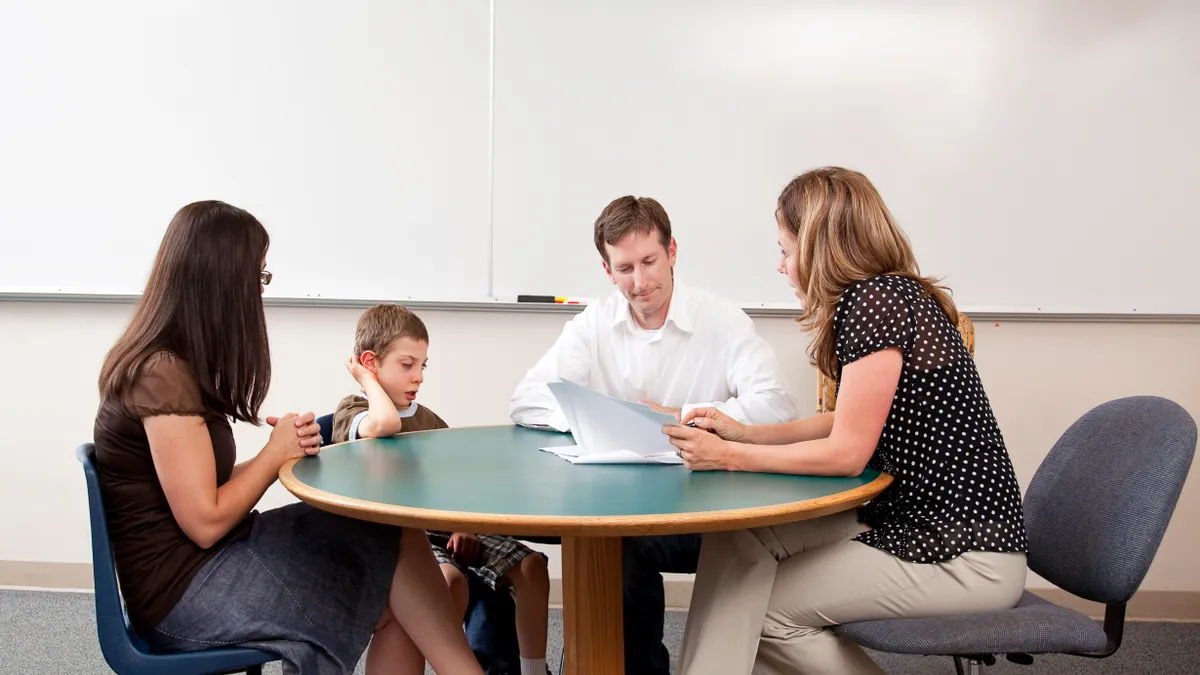There is growing momentum to break down barriers between family engagement practices and educator preparation programs.
“Historically, family engagement and educator preparation have always operated in silos,” said Weadé James, senior director of development and research at the American Association of Colleges for Teacher Education, or AACTE.
But during their educator training, teacher candidates should have meaningful clinical experiences with families and communities through partnerships with the preparation program, school and community, according to guidance issued last month by the National Association for Family, School and Community Engagement in conjunction with AACTE and several other groups.
“This is the first time we’re really looking at the K-12 spectrum to think about how do we be more proactive in equipping teachers with the skills that they need to be able to effectively work with families of diverse backgrounds and engage families in their children’s learning,” James said.
The guidance seeks to inspire new ideas at educator preparation programs and in state policies to incorporate family and community engagement into educator preparation programs. The Educator Preparation Framework for Family and Community Partnerships was also developed with the National Education Association, the Council for the Accreditation of Educator Preparation, and the Mid-Atlantic Equity Consortium.
Released in December, the framework suggests educator preparation programs dedicate courses and fieldwork to family and community engagement. This work should be embedded throughout a teacher candidate’s coursework and not just in one standalone class, the guidance said.
Research has shown teachers feel like they don’t have satisfactory relationships with families, said Vito Borrello, executive director of the National Association for Family, School and Community Engagement.
This has also been cited as a reason teachers are leaving the profession, according to Borrello. And it’s not that teachers don’t care about families, it's just that they lack preparation to form and foster those relationships, he said.
Teachers are "sort of forced to figure it out,” Borrello said. “Teachers from a foundational level haven’t been prepared in any kind of ideal way to engage families as partners in their child’s education.”
The new framework should help improve teacher retention, James said, because educators will be more prepared to engage with families and communities through clinical experiences during their training.
“There is less of a frustration, maybe, because they may have felt they weren’t prepared to work with families,” James said. “I expect that retention will be stronger because candidates would have had that preparation before entering the field.”
Integrating family and community engagement practices into educator preparation programs will also help recruit future educators to teach within their own communities, she said. There’s an opportunity to recruit from the communities where schools are located, whether that’s by tapping into teacher apprenticeship models or creating a pathway to the teaching profession for paraprofessionals, James said.
“There’s a grow-your-own element to this as well,” James said.
Focusing on educator preparation and family engagement together also creates an opportunity to diversify the teaching workforce, said Margaret Caspe, one of the lead authors of the framework.
“We know in surveys and research that teachers of color are even more attracted to the profession when they see a community focus in their work,” Caspe said.














